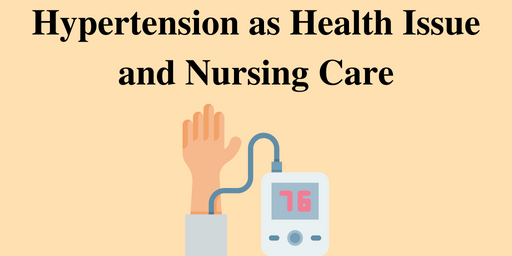Hypertension as Health Issue Hypertension as Health Issue What Is Hypertension? Hypertension is defined as sustained and elevated levels of systolic and/or diastolic blood pressure.
The Hypertension as Health Issue and Nursing Care
The exact threshold for hypertension has been continually revised, but its importance lies in the strong association between prolonged high arterial pressure and an increased risk of cardiovascular morbidity and mortality. The Joint National Committee on Prevention, Detection, Evaluation, and Treatment of High Blood Pressure (JNC) defines hypertension as a systolic blood pressure ≥140 mm Hg and/or a diastolic blood pressure ≥90 mm Hg, or the use of antihypertensive medication. Hypertension is classified into various categories, including prehypertension as a precursor to hypertension.
Primary Hypertension According to Kaplan
Primary hypertension, formerly referred to as essential hypertension, occurs in 95% of individuals diagnosed with high blood pressure. It is distinct from secondary hypertension, which results from an identifiable and treatable cause. Primary hypertension is now recognized as a critical health concern, particularly in older populations. Isolated systolic hypertension, where systolic pressure is elevated while diastolic pressure remains normal, is common among the elderly and poses significant cardiovascular risks.
Hypertension as a Health Issue
Hypertension is a major public health issue affecting approximately 50 million Americans. Data from the National Health and Nutrition Examination Survey (NHANES III) revealed a higher prevalence of hypertension in non-Hispanic Blacks (33.5%), followed by non-Hispanic Whites (28.9%) and Mexican Americans (20.7%).
Awareness, treatment, and control of hypertension vary across ethnic groups. For instance, only 40.3% of Mexican Americans with hypertension receive treatment, and even fewer achieve controlled blood pressure. Disparities in hypertension control are also evident among non-Hispanic Blacks, a group that experiences significant challenges in achieving blood pressure reduction despite equal access to care.
Causes or Risk Factors Contributing to Hypertension
Hypertension prevalence increases with age and is more common among non-Hispanic Blacks, individuals from lower socioeconomic backgrounds, and men in early to middle adulthood. However, women, particularly non-Hispanic Black women, experience higher rates of hypertension as they age. The JNC has classified prehypertension as a warning stage, and hypertension is divided into two stages for clinical evaluation and treatment.
Other Pathological Issues and Hypertension
Hypertension frequently coexists with other risk factors, both modifiable and nonmodifiable, that contribute to cardiovascular disease. Nonmodifiable factors include low birth weight, older age, family history of hypertension, and a personal history of diabetes, coronary heart disease, stroke, or renal disease. Modifiable risk factors include smoking, excessive alcohol consumption, high-fat diets, excess sodium intake, obesity, and physical inactivity. Psychosocial and environmental stressors also contribute to the development and management of hypertension.
The long-term consequences of uncontrolled hypertension include arteriosclerosis, heart failure, transient ischemic attacks (TIA), stroke, peripheral vascular disease, aneurysms, and end-stage renal disease. Emerging risk markers such as high-sensitivity C-reactive protein and homocysteine are being studied for their relationship with hypertension.
Goals and Outcomes of Treatment
The primary goal of hypertension treatment is to prevent morbidity and mortality through the least invasive means possible. Treatment decisions are based on the severity of blood pressure elevation, the presence of target-organ disease, and coexisting risk factors. However, non-adherence to treatment regimens remains a significant barrier to achieving and maintaining target blood pressure levels. Many traditional treatment approaches fail to account for cultural sensitivity and do not actively involve patients in decision-making, resulting in poor long-term compliance.
To improve treatment outcomes, a patient-centered approach is essential. This includes addressing the individual’s concerns, social support systems, employment status, and daily life barriers. Nursing plays a critical role in designing and implementing patient education programs to enhance treatment adherence.
Non-Pharmacological or Nursing Therapies
Non-pharmacological therapies, also known as lifestyle modifications, are integral to managing hypertension. These interventions promote healthier lifestyles and aim to reduce cardiovascular risk factors. Key components of lifestyle modification include weight reduction, adherence to the Dietary Approaches to Stop Hypertension (DASH) eating plan, increased physical activity, reduced sodium intake, and moderation of alcohol consumption. Although smoking is not directly linked to hypertension, it is a significant cardiovascular risk factor and should be avoided.
Healthy People Strategies and Objectives
Non-pharmacological therapies for hypertension are closely aligned with the objectives of Healthy People 2010 and represent a promising area for nursing practice and research. Public health prevention strategies focusing on lifestyle modifications at the community level can help reduce blood pressure levels across the population. Key intervention targets include reducing dietary sodium and fats, increasing physical activity, and addressing societal barriers such as lack of access to care and limited economic resources.
Future research should prioritize patient-oriented outcomes, including the impact of hypertension on sexual function, the ability to perform daily activities, and overall quality of life. Developing and testing culturally sensitive interventions that account for the unique needs of diverse populations will also be crucial in improving hypertension management outcomes.
Read More:
https://nurseseducator.com/didactic-and-dialectic-teaching-rationale-for-team-based-learning/
https://nurseseducator.com/high-fidelity-simulation-use-in-nursing-education/
First NCLEX Exam Center In Pakistan From Lahore (Mall of Lahore) to the Global Nursing
Categories of Journals: W, X, Y and Z Category Journal In Nursing Education
AI in Healthcare Content Creation: A Double-Edged Sword and Scary
Social Links:
https://www.facebook.com/nurseseducator/
https://www.instagram.com/nursesaeducator/
